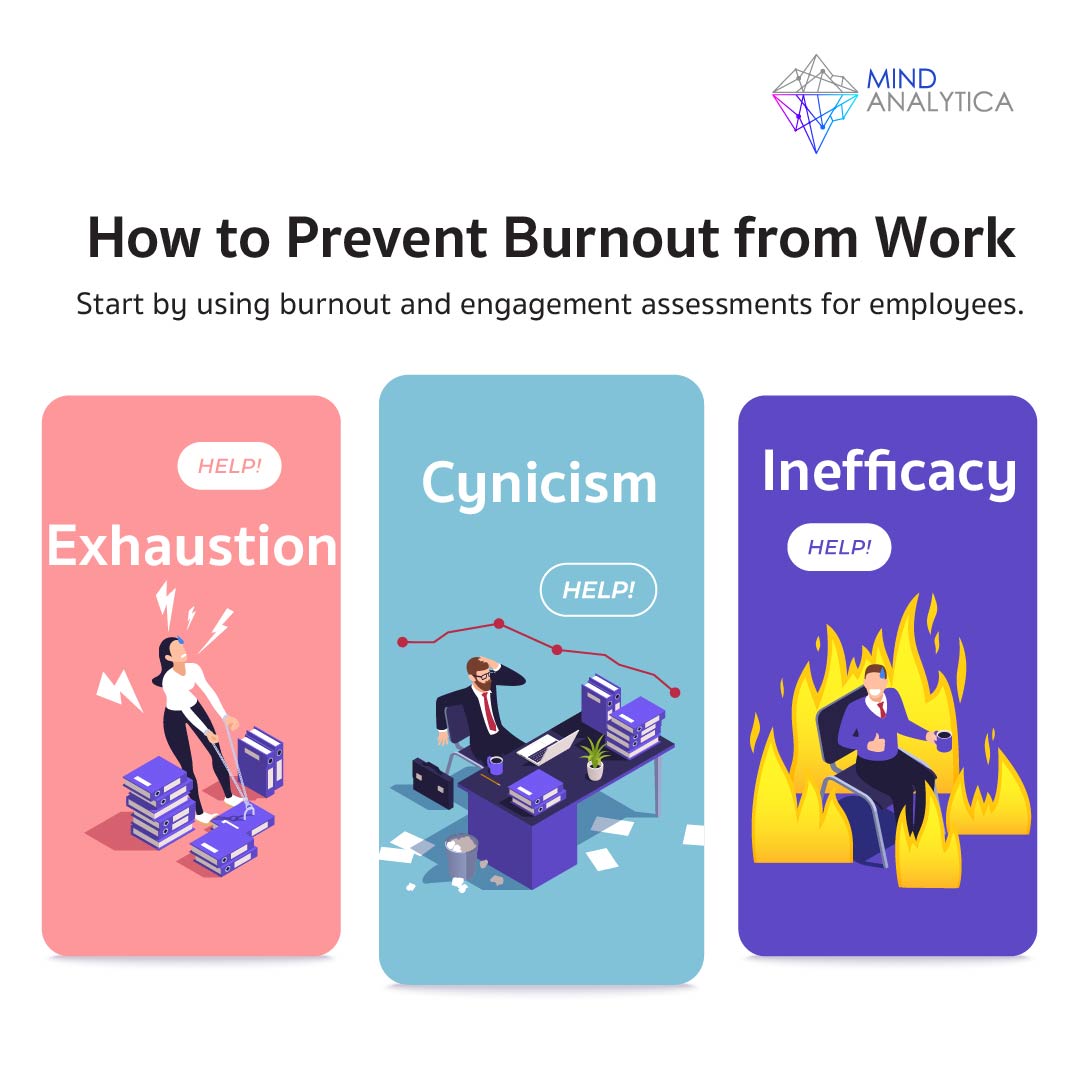How to Prevent Burnout from Work
12 เมษายน 2567 - เวลาอ่าน 4 นาที
Start by using burnout and engagement assessments for employees.
Mental well-being at work is a very important factor in work performance. Good mental health will make employees in the organization committed to their work. On the contrary, if employees have poor mental health, it will lead to burnout. This negative state of mind is a mental response to chronic stress that is not managed properly.
The components of burnout at work include:
Exhaustion means feeling tired, bored, and exhausted from what you are doing.
- Cynicism or depersonalization means apathy and indifference to the current work, whether it is good or bad, as well as indifference to the happiness or sadness of colleagues.
- Inefficacy or reduced accomplishment means feeling a lack of potential, achievement, and effective work. Feeling like you can't do anything right and don't have the confidence to do anything right.
- Engagement at work, which is the opposite of burnout, is defined as a state of being full of energy to participate in activities that fulfill one's needs and promote one's professional potential.
The components of engagement at work include:
- Vigor means having high energy and resilience during work. They are willing to invest their time and effort in their work and are resilient in the face of obstacles.
- Dedication means feeling important, enthusiastic, inspired, proud, and challenged at work.
- Absorption means the ability to focus and concentrate on your work, making you feel like time is passing quickly and it's hard to break away from what you're doing.
When you see the contrast between burnout and engagement, both academics and HR professionals aim to address the problem of burnout among employees in the organization by promoting both vigor and resilience, promoting engagement and absorption in work, and ensuring that employees in the organization feel committed and feel capable and successful in their work.
Strategies to prevent burnout at work:
1. Focus on engagement at work. Innovative examples that promote engagement at work include dealing with incivility at work, which means disrespect for each other and leads to poor behavior between employees. A study in the United States by Osatuke et al. in 2009 found that the CREW model, which comes from the words Civility, Respect, Engagement at Work, helped reduce burnout at work by having good relationships with colleagues.
2. Organizational assessment. Regular organizational assessment helps to see the overall well-being of the organization in a concrete way, including indicators related to the strengths and weaknesses that need to be aware of. Organizational assessments often find that burnout is often discussed in terms of fatigue and workload, but there are other factors in burnout as well, such as unfairness, excessive control, or favoritism in the workplace. These are more important factors for stress at work.
3. Early detection. To prevent burnout, it is necessary to have a process to detect early signs of the problem before it becomes a bigger problem later. One method of detection is to use psychological measures, such as the Maslach Burnout Inventory (MBI) or the Areas of Worklife Scale (AWS). It was found that employees with high scores on the burnout at work scale are a warning sign that the employee is in transition to burnout at work. In addition, employees with high exhaustion scores can also predict the rate of injury in the following year.
In conclusion, the goal of preventing burnout and creating engagement at work is one of the things that needs to be given attention. In addition, it is something that needs to be further researched so that detection and prevention can occur effectively. There is currently a lot of knowledge and tools available to make the prevention process much better. What is still lacking is the use of tools such as burnout and engagement at work assessments for early detection and evaluation after the implementation of burnout reduction programs. To see concrete results and the most benefits.
Original articles:
Maslach, C. (2011). Burnout and engagement in the workplace: New perspectives. European Health Psychologist, 13(3), 44-47.
Osatuke, K., Mohr, D., Ward, C., Moore, S.C., Dyrenforth, S., & Belton, L. (2009). Civility, Respect, Engagement in the Workforce (CREW): Nationwide Organization Development Intervention at Veterans Health Administration. Journal of Applied Behavioral Science, 45, 384-410. doi: 10.1177/0021886309335067



